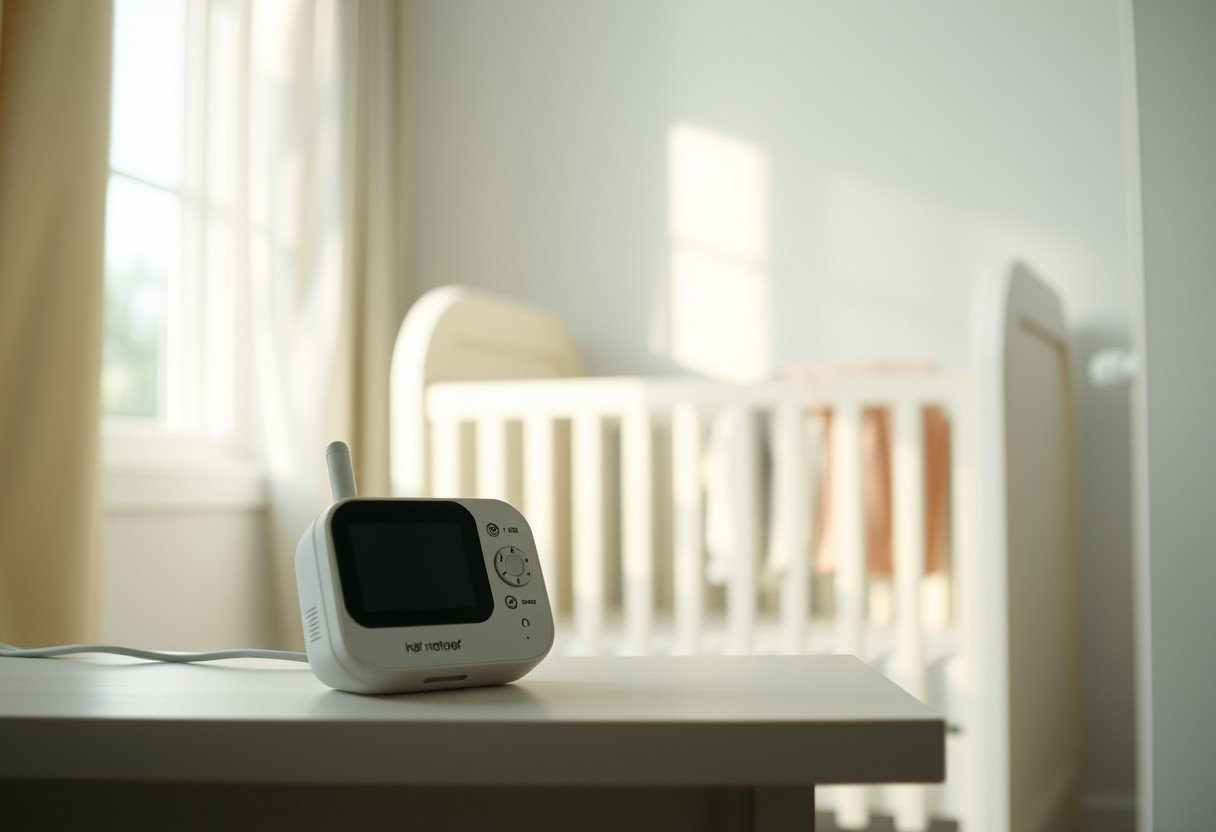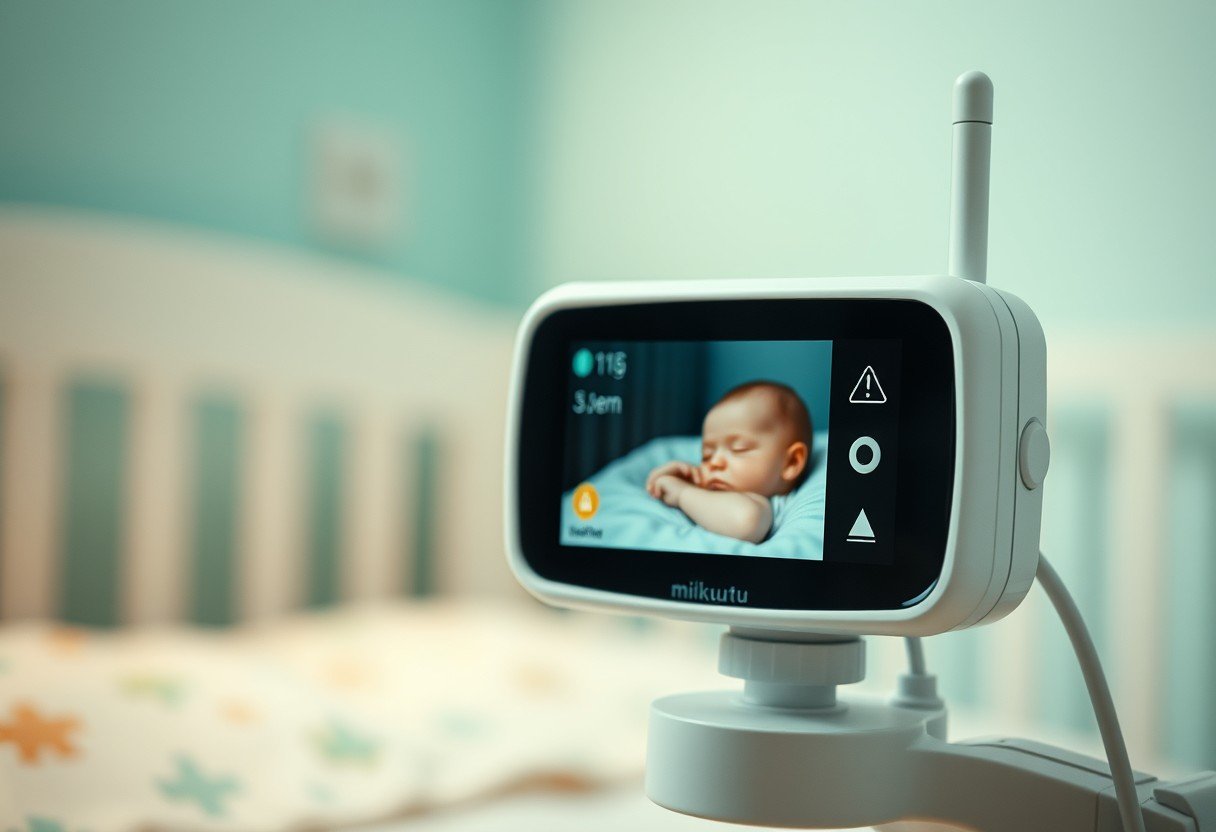Are you wondering if a non-Wi-Fi baby monitor is the right choice for your family? In a world full of smart devices, these traditional monitors offer a simple, secure, and reliable way to keep an eye on your little one. They work without an internet connection, which means you don’t have to worry about Wi-Fi dropouts or cybersecurity risks. This guide explains how they function and what to look for, helping you find the perfect fit for your peace of mind.
How do Non-Wi-Fi Baby Monitors Work?
Non-Wi-Fi baby monitors are refreshingly simple. They don’t need your home internet to function. Instead, they use dedicated radio frequencies, like a walkie-talkie, to create a direct and private link between the baby unit (the transmitter) and the parent unit (the receiver).
This closed-loop system sends audio and sometimes video signals directly from one device to the other. There is no data traveling over the internet, which is a key reason many parents prefer them.
This direct connection makes them highly reliable, as they are not affected by Wi-Fi signal strength or internet outages. You get a consistent feed from your baby’s room, ensuring you never miss a moment or a sound, even during a storm that knocks out your internet.
The Biggest Advantages of Going Wi-Fi Free
Choosing a non-Wi-Fi baby monitor comes with several powerful benefits that appeal to security-conscious and practical parents. The most significant advantage is enhanced privacy and security.
Since these monitors don’t connect to the internet, the risk of the camera feed being hacked by outsiders is virtually eliminated. Your family’s private moments stay truly private, offering invaluable peace of mind. This is a major concern with internet-connected devices, but non-Wi-Fi models bypass this risk entirely.
Another key advantage is reliability. Your monitor’s performance isn’t dependent on the quality of your Wi-Fi signal. You won’t experience lag, buffering, or sudden disconnections because your internet is slow. Many models also feature excellent battery life, making them dependable during power outages and perfect for travel.
What are the Different Types Available?
Non-Wi-Fi baby monitors come in several forms, each designed to meet different parental needs and budgets. Understanding these types will help you narrow down your search for the ideal device.
Some parents only need to hear their baby, while others want a full visual. The market offers everything from basic audio devices to more advanced sensor-based systems.
Here is a breakdown of the most common types you will find:
| Monitor Type | Primary Function |
| Audio Monitor | Provides sound-only monitoring from the baby’s room. |
| Video Monitor | Includes a camera for a live video feed, often with night vision. |
| Motion Sensor Monitor | Tracks the baby’s movements and alerts you if motion stops. |
| Dual-Function Monitor | Combines both audio and video capabilities in one system. |
Key Features to Look for in a Non-Wi-Fi Monitor
When you start shopping, you’ll notice a wide range of features that can enhance your monitoring experience. While core functionality is important, these extras can provide added convenience and reassurance.
Think about your daily routines and what would make life easier. For instance, if you plan to soothe your baby from another room, two-way communication is a must-have feature.
Consider these popular and useful features:
- Night Vision: Most video monitors include infrared night vision, allowing you to see your baby clearly in a completely dark room.
- Two-Way Communication: This feature lets you talk to your baby through the parent unit, which can help soothe them back to sleep without you entering the room.
- Temperature Monitoring: A sensor in the baby’s room displays the temperature on your parent unit, ensuring your baby is always comfortable.
- Range Indicator: This alerts you when you are moving out of the monitor’s effective range, so you don’t lose connection unexpectedly.
The best monitor for you will have the features that match your parenting style and home layout. A large home will require a monitor with a longer range, while a parent who wants to track sleep patterns might prioritize motion sensors.
Understanding the Limitations and Downsides
While non-Wi-Fi monitors excel in security and reliability, they do have some limitations you should be aware of. Their biggest drawback is their limited range. The signal typically works well within a standard-sized home, but it can be weakened by thick walls, multiple floors, or other electronic devices.
If you live in a very large house, you might experience signal drop-offs in certain areas. It’s important to check the manufacturer’s specified range and read user reviews to see how it performs in real-world conditions.
Another limitation is the lack of remote viewing. Because they don’t use the internet, you cannot check in on your baby from your smartphone when you are at work or away from home. This functionality is exclusive to Wi-Fi-enabled monitors. If being able to see your baby from anywhere is a priority, a non-Wi-Fi model may not be the best choice for your family.
Frequently Asked Questions
Do non-Wi-Fi baby monitors work without an internet connection?
Yes, absolutely. They are specifically designed to work without the internet by using radio frequencies to create a direct, secure connection between the camera and the parent unit.
What are the main advantages of using a non-Wi-Fi baby monitor?
The primary benefits are superior privacy and security, as they cannot be hacked over the internet. They also offer a more reliable connection that isn’t affected by Wi-Fi outages and are typically easier to set up and use.
Are non-Wi-Fi baby monitors safe for my baby?
Yes, they are considered very safe. They operate on secure frequencies and emit low levels of radio frequency energy, similar to other household cordless devices. Always choose a monitor from a reputable brand to ensure it meets safety standards.
How do I choose the best non-Wi-Fi baby monitor for my needs?
Consider the size of your home to determine the range you need. Then, decide if you want audio-only or a video feed. Finally, look for key features that matter to you, such as night vision, two-way talk, or a temperature sensor.
Can the signal of a non-Wi-Fi monitor be intercepted?
While it is technically possible for older analog models, modern digital non-Wi-Fi monitors use technology like FHSS (Frequency-Hopping Spread Spectrum) to constantly switch channels. This makes it extremely difficult for anyone to intercept your signal.







Leave a Comment